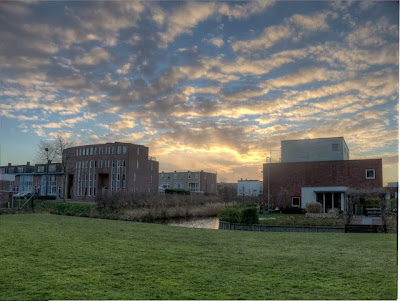Of course, I tested the HDR capabilities, i.e. handheld bracketed frames. Additionally, I took photos with bokeh and also tried the built-in HDR function. The composition of those photographs are not good, I admit, however, composition was not the point of the tests I was doing.
Bokeh
Lets have a look at the bokeh first. The following image is recorded in RAW (of course), scaled down and exported to a 100% quality JPG.
 |
| Canon G15, f/1.8, s/400 @ ISO80, EV-1 |
HDR
What about HDR then? Well, here comes a test. The following photos will show the same scene, shot whilst the camera was solidly stable on the handrail of a pedestrian bridge.
 | |
| the scene, single shot f/1.8, s/1000 @ ISO 80, EV-2 |
 | |
| Built-in HDR, f/2.8, s/100(?) @ ISO80 (according to the camera) |
 |
| no tricks here, 3 frames, -4 (s/2000 ??), -2 (s/1000) and 0 (s/250) EV, f/1.8, ISO80 |
I have the impression that the exposure compensation dial has no influence in the built-in HDR mode at all.
Handheld HDR
Now we are talking handheld exposure bracketed frames combined using HDR techniques. The problem with the camera is that it takes those 3 shots with about 1fps, giving the photographer a lot of time to ever so slightly move that camera. Using the optical viewfinder helps to reduce such a drift, also the position of your arms are more stable that way.
I skip showing the middle image here.
 | |
| middle frame data: f/4.0, s/320 @ ISO80, EV-0.3 |
Extremes
Later that day, I decided to pay a visit to the harbor of Scheveningen. At the time I got there, daylight was completely gone, stars were showing in the sky.
So it was time to try the extreme, a handheld set of bracketed photos under extreme light conditions.
Have a look:
 |
| middle frame |
 | |
| final HDR |
Conclusion
The Canon G15 does a good job. Despite the bracketed mode being a bit slow, it is possible to use this camera for handheld HDR photography purposes. However, the built-in HDR mode should be avoided, in particular since there a no anti-ghosting provisions.
The bokeh of the lens is not too bad.